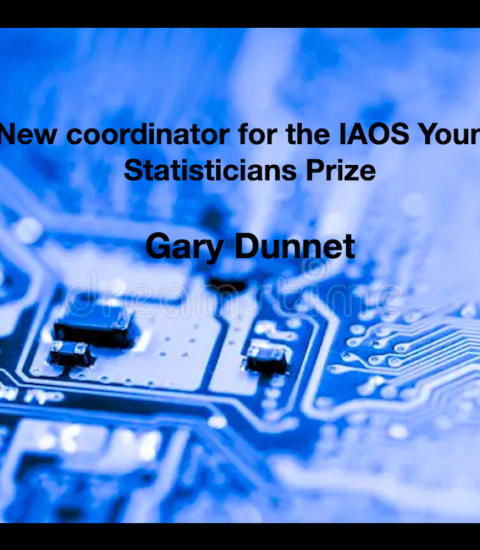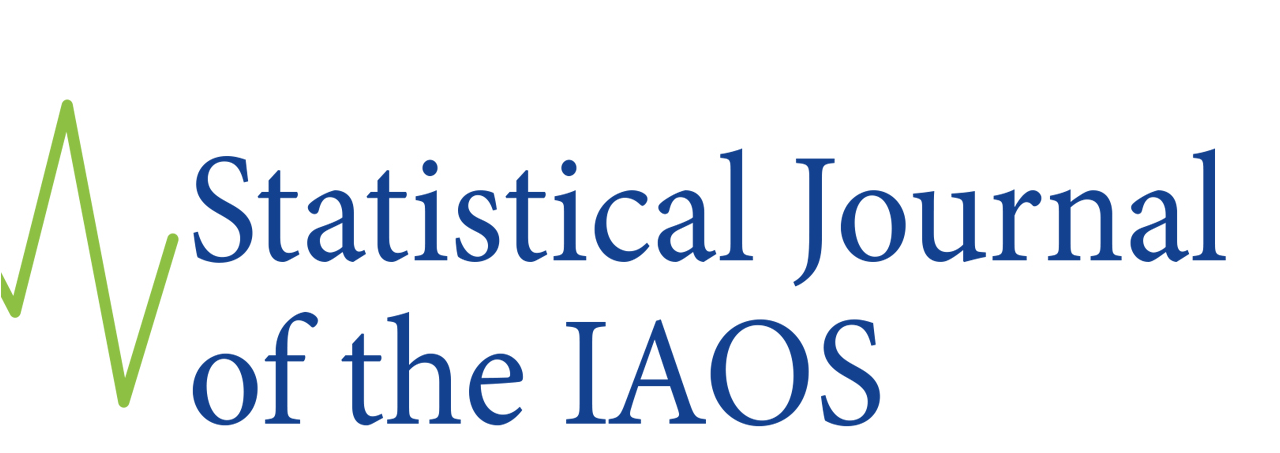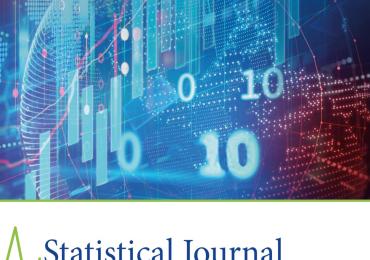
SJIAOS: Thank you Gary for allowing us to interview you. May I invite you to introduce yourself.
I am currently the Deputy Chief Methodologist at Statistics NZ (Stats NZ), which means that I get to support my staff in mitigating many of the most difficult methodological problems that challenge Stats NZ and Official Statistics; whether that be seasonal adjustment post-COVID, introducing AI / ML into statistical business processes, or falling response rates – I love my job! I started at Stats NZ 35 years ago as a methodologist (I’m a mathematician by training), and since I have worked in most parts of the stats office, together with secondments at CSO Ireland and the Australian Bureau of Statistics (ABS) – I was recently described as ‘the all-terrain vehicle of Official Statistics’. A career highlight was taking the original generic business process model, that a few of us developed, to a UNECE meeting that then became the GSBPM.
SJIAOS: Gary, congratulations on your new role as coordinator for the Young Statisticians Prize (YSP). You have recently taken over this role from Gemma van Halderen (former ABS) who has been doing this from 2014-2023, so for 10 years. Can you tell us what exactly the work of the YSP coordinator involves and how the processes of assessing the quality and ranking of the submitted papers are organized?
I’m still learning what the role entails, but thanks to a great hand-over document along with all the hard work Gemma put into refining the YSP to make it a real success I have a good recipe to follow. Thus far, the role has involved arranging for all the launch material to be ready to go and takes place in the month leading up to the launch of the competition (surprisingly there is a lot to do). Once launched there is a lot to do to get the competition advertised on LinkedIn etc. (thanks to the ISI Perm Office & Nancy McBeth this is easy). Shortly I will be sorting out the judging panel and then waiting for the entries to come in (maybe with a few prompts to NSOs along the way). Following the judging there is sorting out the announcements, getting the prize winners their prizes, etc. (nothing too surprising). Then start again.
In terms of judging, the committee uses the criteria outlined in the competition guide, namely: Scientific and/or strategic merit, Originality, Applicability of the ideas in the practice of statistical organizations, and Quality of the exposition. At least two judges blind-review (i.e. defining characteristics such as name) each manuscript, and as each stage progresses all judges review the manuscripts. If need be the judges can seek advice from statisticians with particular specialties. The process is robust but fair.
Before we move on to the next question, I want to publicly thank Gemma for all her work in this regard as the success to date of this for the IAOS & ISI is largely due to Gemma’s drive & motivation – I hope I can live up to her high standard.
SJIAOS: What is your opinion of the importance and impact of this prize?
I think this prize offers young statisticians a chance to get their work recognised on a world stage (through SJIAOS publishing their manuscript, presenting at an ISI / IAOS conference, and related publicity), while also picking up some cash & potentially travel. The judging of the prize is undertaken by a panel of eminent statisticians, and the SJIAOS articles are peer-reviewed and the journal itself is well regarded & well-read across the Official Statistics community – all of this is good for one’s resume or career progression opportunities. In addition, there is a recognition across many National Statistical Offices (NSOs) of the winning papers, as a recognition of the ‘pipeline’ of young statisticians.
I really hope that all countries feel they can participate in this competition – it is not about the ‘heavy hitters’ or big ‘research units’ demonstrating their might, but is it about giving our young statisticians the opportunity to demonstrate their abilities. As I comment below, I think every NSO has something of interest. However, I do think the recent initiative to include a Special Commendation category for Developing Countries is a good step forward.
SJIAOS: Last couple of years the number of submissions for the YSP competition ranged between 17 (2021) to 45 (2019). Official Statistics have become very important in our current society and there are enormous changes in the world of official statistics (thinking also of new data sources, data science, etc). It would be interesting to hear about your expectations concerning the content, quality, and regional distribution (especially in developing countries) of the manuscripts going to be submitted for the prize.
Over recent times I have seen many NSOs face similar challenges, whether that is declining response rates, the allure of administrative data, the rise of misinformation, post-COVID expectations, data stewardship & data leadership, the need to remain relevant, etc., and as such I’d expect to see more manuscripts focusing on how NSOs mitigate these challenges. In addition, I have seen a changing methodological landscape in terms of the rise of techniques such as Bayesian approaches, non-probabilistic sampling, the application of AI / ML, and the need to bring together survey, admin, and model data. As all of these are global challenges, I feel comfortable in saying that I’d expect every stats office to have something to offer to this discussion – if you are working on a problem at your NSO, I am sure there are others around the world doing the same and if you are taking a unique perspective others will be interested, so I would strongly encourage you to publish it and even better encourage a young statistician to do so.
SJIAOS: The YSP prize has been awarded since 2011. Over these years especially the ABS and Stats New Zealand have been very successful in submitting winning manuscripts. What do you think are the main reasons behind this?
I can’t comment on the processes at the ABS, but at Stats NZ we encourage all our eligible staff (from across the organisation) to consider entering the YSP competition – people like myself, the Chief Methodologist, the Director General and Senior Subject Matter Experts have always been supportive of entries, which does make it easier for staff to self-identify and feel encouraged to enter. As I’ve eluded to above, Stats NZ’s success has been driven by publishing work we are doing in our day-to-day operations of an NSO (our size dictates that our work is very focused on the practical day-to-day application of all of our ideas), and I suppose this really plays to the judging criteria of ‘practical application’. As part of our ‘normal processes’ we do have a pretty good culture of writing up our work and presenting it to the (internal) Methods Branch, which makes creating a YSP manuscript easier. At Stats NZ, we do offer assistance to staff in reviewing their manuscripts, less from a technical perspective but more about the context in which the paper sits, etc. – some staff take the opportunity, others don’t (it is their paper after all). Finally, we don’t just see the IAOS YSP competition in isolation, successful and unsuccessful entrants are usually given the opportunity to present their manuscript at a Stats NZ internal seminar, NZ Statistical Association Conference etc., and other potential opportunities (eg. publishing) are examined.
SJIAOS: What do you feel are the most important points young statisticians who want to submit a manuscript for the YSP should concentrate on when preparing their manuscript?
Clearly, the manuscript needs to address the criteria of: (i) Scientific and/or strategic merit; (ii) Originality; (iii) Applicability of the ideas in the practice of statistical organizations; and (iv) Quality of the exposition. In addition, noting that I have little say over the judging of the manuscripts, I’d hope to see two additional features; firstly, a strong customer perspective come through, eg. why was this work done, for whom and were they pleased with the outcome; and secondly, what did the author learn from doing this work?
SJIAOS: What is your advice to your colleagues, Director Generals, and chief methodologists in National Statistical Offices, on how to motivate and stimulate young staff to participate in the YSP competition?
As mentioned above, I think every NSO has something other NSO will have an interest in, and if you have or can get a young statistician working on it, why not support them in putting their name forward? Obviously, the staff themselves will need to want to enter, but once they have made the commitment, I’d hope senior staff would support the young statistician to achieve this goal. My experience suggests the cost of supporting staff to enter the YSP competition is minimal compared to the benefits of doing so (even if the candidate is unsuccessful). I find it great to see that since YSP’s inception, there have been 21 countries who have either gained a 1st, 2nd, 3rd, or Special Commendation recognition through this event – this really demonstrates my point that all NSOs have something to share but it would be great to see more countries share the podium.
SJIAOS: At the recent ISI WSC in Ottawa, but also at other recent international conferences, there were many young statisticians participating. However, not that surprisingly, there is still an overrepresentation of the older (more mature, senior) and more experienced (and in general in the hierarchy higher) statisticians, and also during the sessions, more mature statisticians are generally rather talkative. How do you see the participation of young statisticians and do you have ideas for a higher visibility of the new generations?
I would like to see greater engagement by the younger statisticians, and I think that the ISI Young Statisticians side-event is a good start but warrants greater publicity – I fortunately attended this event at Ottawa, and it was good to see the group developing a bond, which I witnessed remain throughout the ISI event. Also, as a result of the IAOS YSP competition, I know the winners have appreciated the opportunity to present their winning paper at a conference of mutual agreement. I do think there is an opportunity for some of our more senior statisticians to take on mentor-type roles, maybe with an eye to mentor young statisticians presenting, or even assisting them to organise a session, at future ISI and Association events. Across the local & international statistical community, there are plenty of formal or informal opportunities to mentor. Another potential opportunity is for senior statisticians to actively take a young statistician under their wing at an event and introduce them to their ‘friends’ – I will never forget my 1st ISI where Len Cook introduced me to the likes of Kirk Wolter and Michael Hidiroglou, and following introductions left me to talk to them about the work I was doing.
SJIAOS: Thanks for this interview. I wish you and the Young Statisticians success in the coming competitions.



